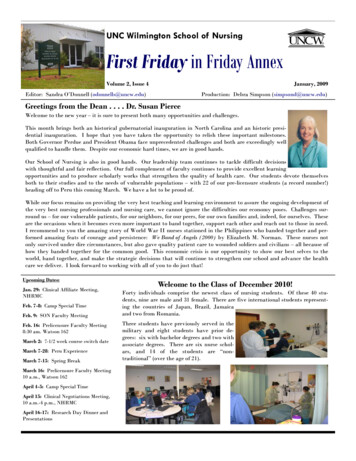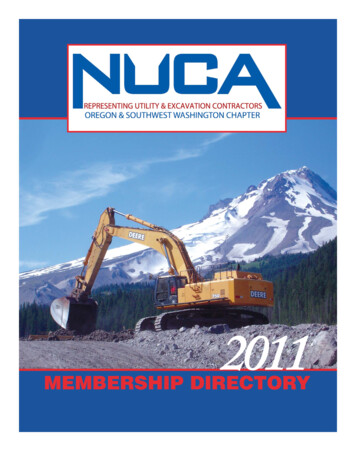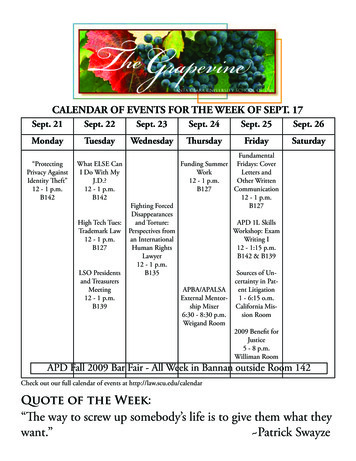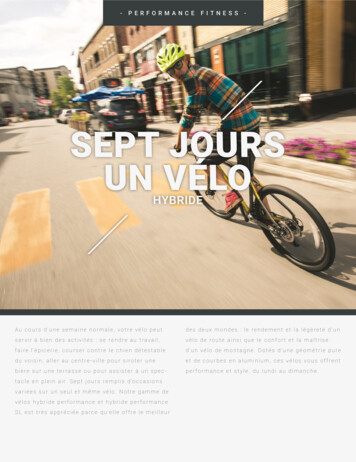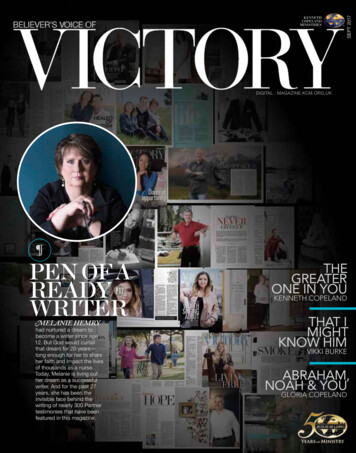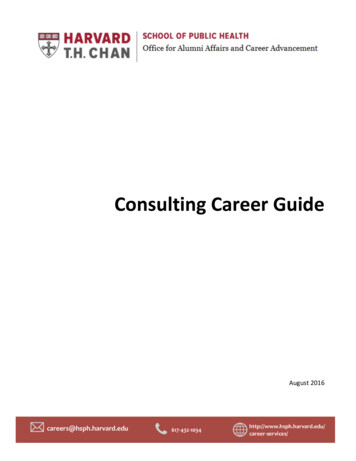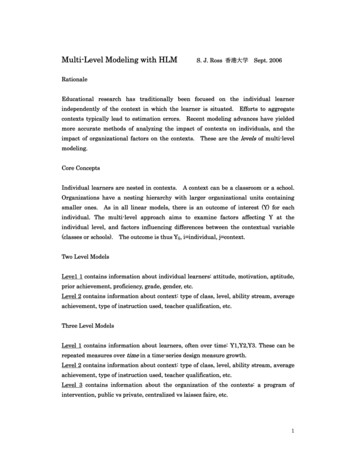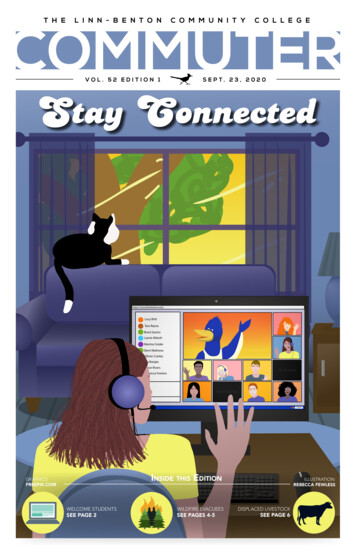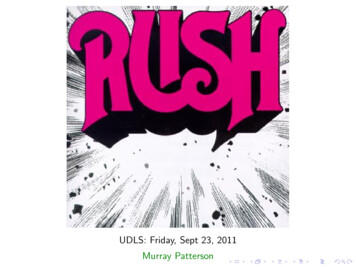
Transcription
UDLS: Friday, Sept 23, 2011Murray Patterson
What you see.Itypical 70’s band (formed in 1968 actually)Isolid, timeless rock band – one of their initial inspirations: LedZeppelin (example: What You’re Doing)Iwell-known songs include: Limelight, Tom Sawyer, (maybe 2112,Subdivisions)
What you see.Itypical 70’s band (formed in 1968 actually)Isolid, timeless rock band – one of their initial inspirations: LedZeppelin (example: What You’re Doing)Iwell-known songs include: Limelight, Tom Sawyer, (maybe 2112,Subdivisions)
In Pop CultureIsome pretty weird dudes: sort of nerdy, outcastIIIIIlyrics: Subdivisions, The Body Electrictour with Kiss (interview with Gene Simmons)not mainstream, but has a huge cult following: quoted as “the mostsuccessful cult band next to Kiss”featured in: Family Guy, South Park, Futurama, an episode ofTrailer Park Boys, and in the movie “I Love you Man”great documentary on the band – Rush: Beyond the Lighted Stage
Wikipedia Sez:Rush is a Canadian rock band formed in August 1968, in the Willowdaleneighbourhood of Toronto, Ontario. The band is composed of bassist,keyboardist, and lead vocalist Geddy Lee, guitarist Alex Lifeson, anddrummer and lyricist Neil Peart. The band and its membership wentthrough a number of re-configurations between 1968 and 1974, achievingtheir current form when Peart replaced original drummer John Rutsey inJuly 1974, two weeks before the group’s first United States tour.Since the release of the band’s self-titled debut album in March 1974,Rush has become known for its musicianship, complex compositions, andeclectic lyrical motifs drawing heavily on science fiction, fantasy, andphilosophy, as well as addressing humanitarian, social, emotional, andenvironmental concerns. Rush’s music style has changed over the years,beginning with blues-inspired heavy metal on their first album, thenencompassing hard rock, progressive rock, and a period with heavy use ofsynthesizers.
The BandGeddy LeeIBorn: July 29, 1953 inNorth York, Ontario, Canadaas Gary Lee Weinrib(“Getty”, from mother)ILee’s parents were Jewishrefugees from Poland(survivors of Dachau andBergen-Belsen)(Red Sector A)
The BandGeddy LeeIBorn: July 29, 1953 inNorth York, Ontario, Canadaas Gary Lee Weinrib(“Getty”, from mother)ILee’s parents were Jewishrefugees from Poland(survivors of Dachau andBergen-Belsen)(Red Sector A)Ilead vocals and general frontman for the band, known forhis “high-pitched screech”Ialso plays bass, keyboards,etc., often simultaneously(Tom Sawyer (Live: Rush in Rio)h3:30i)
The BandAlex LifesonIBorn: August 27, 1953 inFernie, BC, Canada asAleksandar Živojinović (“sonof life”) to Serbianimmigrants, and raised inToronto, OntarioIGeddy Lee was his schoolclassmate and good friend(John Rutsey was hisneighbor)ILifeson is a solid, perhapsvirtuoso guitarist(self-taught, since before age12) (La Villa Strangiato (Live: Rush in Rio)h3:00i)
The BandNeil PeartIBorn: September 12, 1952 in Hamilton, Ontario, Canada as NeilElwood Peart and grew up in Port Dalhousie, Ontario (now part ofSt. Catherines)IA.K.A. “The Professor”, Neil Peart is considered one of the top 5drummers in the world (Drum Solo h0:25,1:50i) (Family Guy tribute)Ialso the band’s principal lyricist, an avid traveller and writer
The Early Years (1968–1976)I1974I1975197519761976started in Willowdale in Toronto, Ontario by Lifeson, Jeff Jones andJohn Rutsey. Lee Replaced Jones several weeks afterself-titled album. Took off when picked up by WMMS in Cleveland,Ohio for Working Manafter the release of debut album, Rutsey left the band and Peartjoined on July 29, 1974, two weeks before the group’s first U.S. tourFly by Night: with Fly By Night, epic mini-tale By-Tor and theSnow Dog and Anthem (Ayn Rand)Caress of Steel: with Bastille Day, and back-to-back TheNecromancer and The Fountain of Lamneth – atmospheric,story-telling, major deviation from Fly by Night – highly unpopular2112: with 20-min title track divided into seven sections (2112).Despite this, 2112 went platinum in Canada (others songs onalbum: Passage to Bangkok and Something for Nothing)All the World’s Stage: live album
Mainstream Success (1977–1981)1977 A Farewell to Kings: with Xanadu and Closer to the Heart1978 Hemispheres: with The Trees and La Villa Strangiato – bothrecorded at Rockfield Studios in Wales, UK. More progressive andexperimental: increased usage of synthesizers, 12-string and classicalguitars, triangles, glockenspiel, cowbells, etc.1980 Permanent Waves: with Spirit of the Radio, Freewill, Entre Nousand Different Strings (which uses string harmonics). Musical shifttowards reggae and new wave elements. Lyrical shift away fromsci-fi/fantasy to more humanistic, social and emotional elements.1981 Moving Pictures: pinnacle album, with Tom Sawyer andLimelight as well as YYZ, Witch Hunt and Vital Signs. Became evenmore synthesizer heavy1981 Exit.Stage Left: live album (forshadows next phase?)
Synthesizer Period (1982–1989)1982 Signals: kicked off the period with Subdivisions, Chemistry,The Weapon and Countdown, where keyboards were suddenlyshifted from the contrapuntal background to the melodic front-linesI Creative differences between Rush and long-time producer TerryBrown began to emerge, with them parting ways in 1983 (quotefrom documentary) (next album title is in words of Hemingway)1984 Grace Under Pressure: with Distant Early Warning, Afterimage,Red Sector A, The Enemy Within, The Body Electric andBetween the Wheels – Peart adds Simmons synthetic drums1985 Power Windows: with Grand Designs, Manhattan Project,Territories and Emotion Detector1987 Hold Your Fire: with Time Stand Still, Open Secrets, Prime Mover,Mission and Tai Shan – more prominence to Lee’s multi-layeredsynthesizer work; critics note Lifeson’s diminished guitar work1989 A Show of Hands: live album
Return to Guitar-Oriented Sound (1989–1997)1989 Presto: with The Pass, War Paint, Scars, Superconductor,Red Tide and Available Light – synthesizers still used, but pushedmore to the background again1991 Roll the Bones: with Dreamline, Roll the Bones,Ghost of a Chance and Neurotica – even more of a departure fromsynthesizers, using more of the standard three-instrument approach1993 Counterparts: with Animate, Cut to the Chase, Nobody’s Hero,Alien Shore, The Speed of Love, Leave That Thing Alone andCold Fire – kicks off a real guitar-driven phase – one of the first timelyrics are related to love and relationships (and most of the album isdedicated to this subject)1996 Test for Echo: with Test for Echo, Driven, Half the World, TheColor of Right, Virtuality, Resist, Limbo (search “Rush Limbo”),Carve Away the Stone – ventures almost completely from lovetheme – it and Counterparts two of Rush’s most guitar-driven
The Later Years (1997–present)hiatus: in August 1997 Peart’s daughter died in a car accident,followed by his wife’s death from cancer in June 1998. Peart tellsLee and Lifeson “consider me retired” and goes on an extensive tripthroughout North America on his motorcycle2002 Vapor Trails: they’re back! with One Little Victory, Ghost Rider(hommage to Peart’s book), The Stars Look Down, How It Is,Out of the Cradle – the first studio recording not to include a singlesynthesizer, organ or keyboard part since the early 1970s2004 Feedback: cover of songs that were influential to them during the1960s – includes Summertime Blues by Cochran/Capehart, HeartFull of Soul by Graham Gouldman (Yardbirds), Mr. Soul by NeilYoung and Crossroads by Robert Johnson (Cream)2007 Snakes and Arrows: with Far Cry, Armor and Sword,The Main Monkey Buisness, The Way the Wind Blows, Hope,Faithless, Malignant NarcissismI
Thanks!Any Questions or Comments?
I featured in: Family Guy,South Park, Futurama, an episode of Trailer Park Boys, and in the movie \I Love you Man" I great documentary on the band {Rush: Beyond the Lighted Stage. Wikipedia Sez: Rushis aCanadianrock band formed inAugust 1968, in theWillowdale neighbourhoodofToronto,Ontario. The band is composed of bassist, keyboardist, and lead vocalistGeddy Lee, guitaristAlex Lifeson, and .
